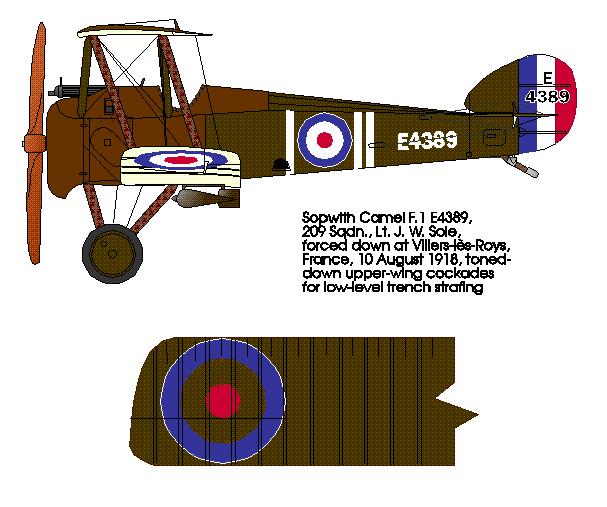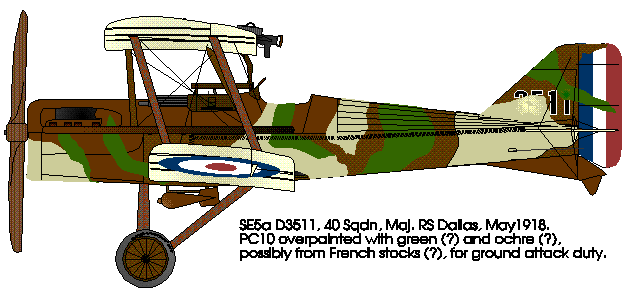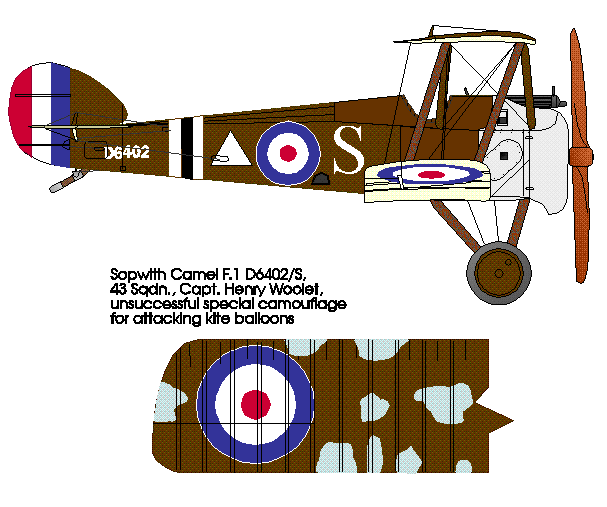
Ground attack—"trench strafing" as it was then called—was by 1917 one of the principal activities of the Royal Flying Corps (later RAF). Fighter aircraft would attack German trench lines, machinegun posts, artillery batteries, and communications from near ground level with machinguns and up to four twenty-pound Cooper fragmentation bombs per aircraft. Such attacks could be devastating, particularly against troops caught retreating or deploying. Strafing by Bristol fighters and Camels single-handedly routed and destroyed a Turkish army surprised in a defile in Palestine. All-out attacks by British fighters helped to slow and then isolate Ludendorff's storm troopers, contributing materially to the containment of Germany's last, great offensive of spring and summer 1918 and the subsequent Allied victory.
But such operations were not without their costs, costs that were often severe. At low level, aircraft faced intense ground fire from scores of densely packed prepared positions. Hundreds of infantry rifles and machinguns—in some cases even field guns—would join the 37-mm automatic cannon ("flaming onions") and larger caliber flak guns whenever fighters ventured over the lines. While the Germans were quick to develop armored warplanes for low-level missions—the two-seater Junkers, Albatros, and AEG J-types—Britain lagged behind in this regard. The first British armored airplane, the Sopwith Salamander, was just entering production when the war ended. Nor was ground fire the only danger. Ground-attack airplanes were vulnerable to fighter attack. The British airman's attention had to stay focused on his targets and on the dangerous proximity of the ground. His enemy invariably held the dual advantages of surprise and height. Losses were often heavy, particularly in the desperate spring of 1918, when every available man and plane was hurled against the advancing Germans.

To shorten the odds against them, British trench-strafers began to supplement the standard RFC/RNAS/RAF camouflage scheme—greenish brown PC10 dope on all upper surfaces—with various additions, all intended to make the aircraft harder to see, especially from above. The large, red-white-and-blue roundels on the upper wings were quickly toned down. The white was very conspicuous against the ground and provided an excellent aiming point for a diving attacker—all the latter had to do was to aim between the white marks and he was sure to kill the pilot. At first, British ground crews simply smeared the white with mud while their aircraft did temporary duty as strafers before returning to their normal air fighting. But, as units began to specialize in dangerous low-level work (often over a set area, so that they could learn where the targets were), more permanent solutions were tried. The white ring of the wing roundels (and the fuselage roundels, if they were close to the crew) was commonly overdoped with PC10, as in the case of nightfighters. Sometimes, the entire over-wing roundel was obscured by an overwash of PC10. A few pilots experimented with irregularly spaced, unevenly sized, or distorted insignia, which, it was hoped, would throw off an attacker's aim.

These methods made the airplane's markings less conspicuous, but they did little to break up the outline, the critical recognition feature for the ground gunner. Accordingly, some pilots followed the French lead and applied multicolored disruptive patterns to their aircraft. In some cases (viz. the SE5a shown here), actual French paint may have been applied.

While British authorities did all they could to discourage ad-hoc camouflage systems, they must have proved their value. By 1918, officialdom had to recognize that ground-attack aircraft needed something more than PC10, if only for the sake of morale. Had the Salamander and its corresponding two-seater, the Sopwith Buffalo, seen service, they would thus have been supplied in the service's first official disruptive finish, a pattern of brown, green, grey, and black developed after exhaustive trials in the UK. Surely this alone testifies to the soundness of the earlier field expedients.
© 1996 by Robert Craig Johnson. Part of a series first published in Eagle Droppings, the Newsletter of the Rocky Mountain Chapter, IPMS/USA.